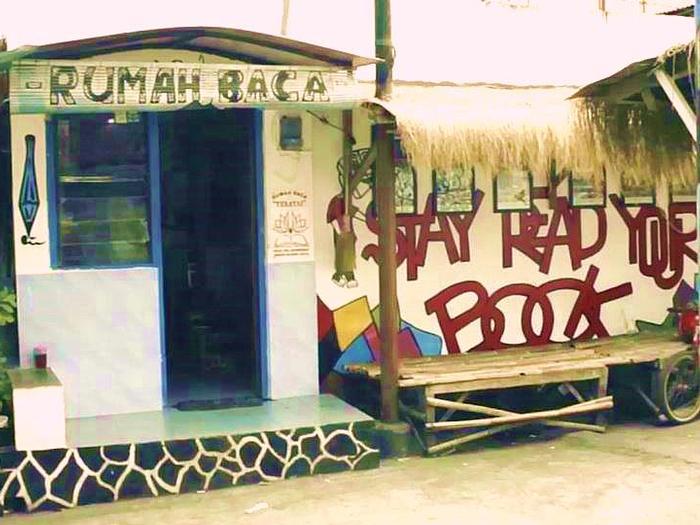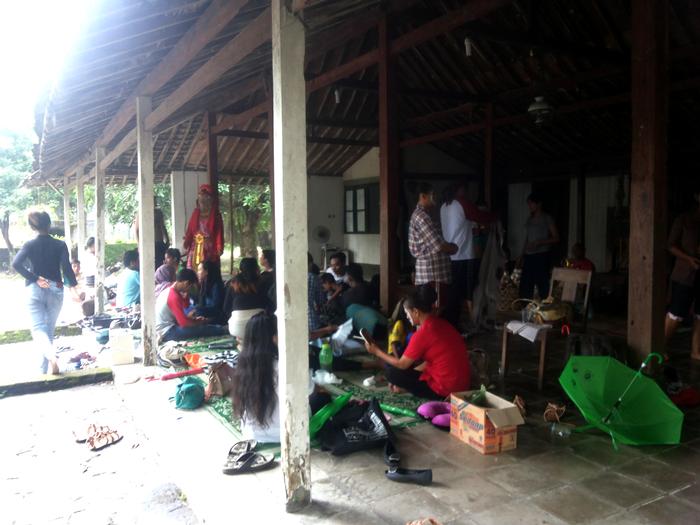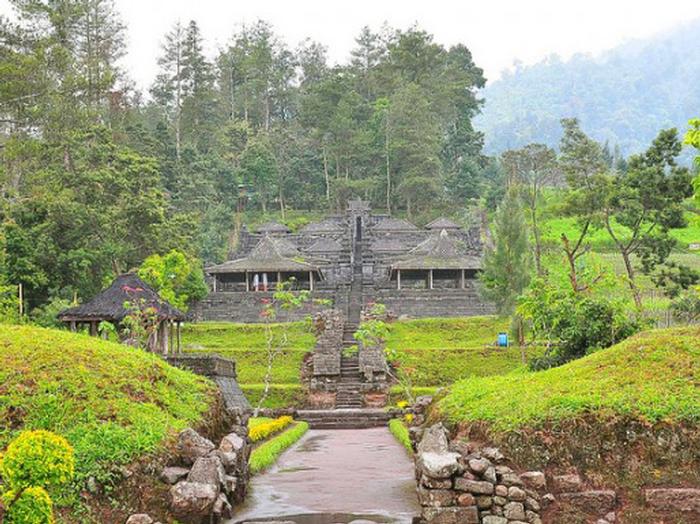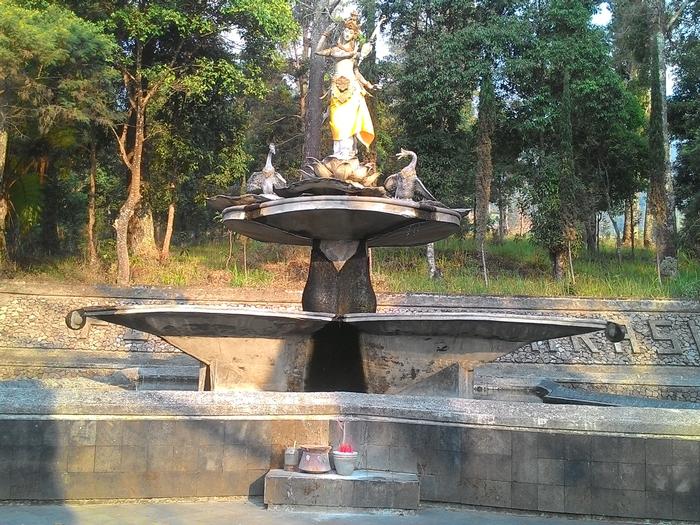Lia Sparingga Purnamasari and Muhammad Satya Irfananda EssayRepurpose to Survive: a Lesson from SurakartaIt was Sunday morning, and as usual, cars and motorbikes were not allowed to pass two main roads in Surakarta. The city is the first city in Indonesia that makes use of arterial roads as public spaces through a program called “car free day”. Every Sunday from 6 to 9 p.m., all motor vehicles are prohibited from passing. The festivity in the car free day is the best example of how vibrant and diverse the communities are in Surakarta. The city is famous for its communities, which are formed out of common interests. Families, dog lovers, ping pong players, yoga enthusiasts, and many other communities share two sections of main roads and do activities together. Communities in Surakarta also exist to address bigger issues. Socioeconomic limitations and lack of government attention trigger its citizens to form grassroots movements to reach their goals. Although often supported by the local government, most communities are ignited through the spontaneous initiatives of their members. Most of them are informal entities without any legal bond. The spontaneity of those communities is also reflected by the way they do architecture. Their limitations force them to find creative solutions to house their activities. The biggest issues in Surakarta that the people have to overcome are illiteracy, vanishing traditional arts, and religious intolerance. Youth illiteracy, which is caused by poverty and poor access to public education, could lead to more serious problems such as juvenile crime and financial troubles. The rapidly modernizing society in Surakarta prefers the more contemporary forms of art, which leads to the decline of traditional arts. This city also acts as a melting pot for different religious groups, making discussions about religion sensitive and is often avoided. Religious minority groups are vulnerable to direct as well as indirect attack and discrimination from the Muslim majority. In this essay, we want to focus on studying three communities that deal with those problems, and how the way they do architecture affects their endeavors. Our first object of observation is located in the kampung (neighborhood) of Dadapsari, in Sangkrah sub-district. This slum settlement is vulnerable to flood, communicable diseases, and environmental degradation. The slum inhabitants cannot be separated from poverty, which forces many of its young people to drop out of school and lapse into criminality such as thievery, drug smuggling, and illegal gambling. This pattern, which has been going on for decades, led the Surakarta Police Department to mark this area as one of the areas with the highest crime rate. In the past, this pattern had erased the hope of the young people to have a bright future as they thought they would automatically fall into the chain of criminality, or be stigmatized that way, simply because they lived in this kampung. In 2014, a group of young people in Sangkrah, led by Danny Setiawan, sparked an initiative to establish a community library with a strong desire to break the pattern and change the situation. They believed that education was the only thing they need to pursue, to help them achieve a better future. At first, they had troubles finding an available space in a dense slum settlement. Building cooperation among the people in this area was also difficult. Moreover, building a new structure was too financially burdening for them. They finally found a 40 square feet abandoned community watch-post located in the middle of the settlement which could be re-purposed. With the help of the kampung residents, they modified the watch-post and turned it into a community library. The modification included adding bookshelves inside the watch-post and painting murals with educative messages on its outer walls. As enthusiasm among the people grew, the community modified the library further by adding benches outside the library to house more visitors. This community library is the architectural manifestation of the willingness and dreams of a youth community to break the chain of a crime-ridden society. The building stands as a tool for the community to achieve their desired conditions of a better future. Since its establishment, the library continues to attract people, shown by the increasing number of children and teenagers who visit it regularly. “Imagination and knowledge can change the world,” is one of the messages of the murals. The building sends a clear message to the youth in Sangkrah that with education, they also have the chance to get a brighter future, just like what the murals say. Our second object observation is the Kemasan traditional theater, located in Kepatihan Kulon Sub-District. Bambang Sugiarto was the initiator of this theater along with a group of traditional art enthusiasts in Surakarta in 1970. Their mission is to save the dying traditional performing arts by passing the artistic skills to the future generations. They were well aware that the attempt to re-introduce traditional forms of art into the modernized generation in the middle of the rapidly urbanized city was not going to be easy. However, without any attempt to pass on the traditions to the future generations, the city would have the risk of losing its intangible heritage forever. Kemasan theater community holds weekly training and performances in a century-old traditional Javanese Joglo house owned by Budi. When Kemasan theater was officially formed in the late 1970s, Budi granted the abandoned "pendhapa" (big front veranda) of the house as the community’s meeting place. Traditionally, the "pendhapa" of a Joglo house functions as the place to welcome guests and hold occasional traditional art performances. In this case, the focus of the community’s architectural modification is to upgrade the function of the limited space in the "pendhapa" to accommodate more activities. Children and teenagers can be found practicing dancing, acting, and singing in the 26 feet by 32 feet veranda. The veranda also accommodates weekly community gathering, which includes script-writing and role audition meetings. On occasional show days, which are usually held once a month, the same veranda is transformed into a stage by installing white fabrics as a divider between the stage and the backstage. The courtyard in front of the house is transformed into a tribune that accommodates up to 300 people. Their choice to reuse an abandoned traditional Joglo house, which then re-purposed as a place to both practice and perform, is a manifestation of the community’s endeavor to preserve the vanishing traditional art. The modification provides more flexibility in term of the functions of the house, which is necessary to accommodate the community’s activities. The house stands to give a sense of assurance and sustainability to the community. It also helps to achieve the community’s goal, by inviting the public to watch the performances and be aware of the dying traditional art. The Kemasan theater community now has more than 70 permanent members and hundreds of former members with the same awareness and sympathy. The number is projected to continue to grow as the spirit of the community never ceases to keep the traditional arts alive. The most interesting endeavor is done by our third object of observation, a small Javanese Hindu community near Cetho Temple. Located in the outskirt of Surakarta and in the vicinity of Mount Lawu, Cetho Temple is a 14th-century Javanese Hindu temple which was rediscovered in 1928 by a Dutch archeologist named A. J. Bernet. Living in a remote mountainous area which is hard to access, this community had to overcome two problems: poverty and the lack of recognition from the religious majority. Seasonal farming was the people’s main source of income and was hardly enough for them to survive. Living in the biggest Muslim country in the world, the community also needs recognition from the majority to get protection and be involved in decision-making processes. This community found a way to overcome those problems, which was by introducing tourism into the area. To foster tourism, the Cetho Hindu community modified their ancient place of worship by building several new structures. These new structures were built in the Balinese styles. The community constructed a scene that is often referred as the “tourist gaze”. Most tourists have some set of expectations and anticipations prior to participating in heritage tourism. People travel as tourists in order to have an "authentic" experience. In the case of Cetho, an “authentic” Hindu scene is expected. The adoption of Balinese traditions is based on this expectation. Balinese Hindu culture is more popular among common tourists. It is as if in Indonesia, Hindu means Bali. Moreover, Javanese Hindu culture does not excite the tourists, who are mostly locals, since it does not contrast with the everyday life of the common Javanese people. Apart from providing the Cetho Hindu people with a new sustainable source of income, tourism also helps to strengthen their Hindu identity. As tourists come, the community gains more exposure. Before tourism was introduced, many people did not even know that the community existed. This kind of exposure is favored because the people need to be recognized. Assimilation with the Balinese identity also helps these people to “look” more Hindu, since most people are more familiar with it. This stronger Hindu identity also helps the community to build connections with the other Hindu communities across the country. Balinese and Javanese Hindu traditions are similar but not identical. The two traditions have a different set of rituals, ceremonies, and especially, architectural traditions. Balinese traditions are more festive because they are more contemporary. Balinese religious buildings are made with various materials, bigger and taller, and adorned with intricate decorations. Javanese buildings in general are usually much more modest, made with local materials, with simpler ornaments. Some godly figures are popular in Bali but not in Java, and vice versa. Visually, it is easy to differentiate between the two traditions. The adoption of Balinese culture affects many physical aspects of the Cetho temple. Upon entering the temple, tourists are required to wear "kain kampuh", the famous black and white checkered fabric usually seen in Bali, around their waists. The cloths wrapped around their waists are not the only thing “Balinese” in the temple. Plaid black and white fabrics that they wear, are also worn by the statues of gods and goddesses made out of black stone scattered in all directions. New architectural elements were also built in Balinese style. These new additions visually smother the original structure of the temple. Fancy gates, meditation cabins, and an artistic statue were added. Temporary decorations such as "umbul-umbul" (religious banners), decorative "janurs" (decorations made from coconut leaves) add festivity in the temple. However, the most Balinese-looking addition was the erection of a 20-foot-tall goddess Sarasvati statue, finished in 2010. Although widely known and worshiped in Bali, goddess Sarasvati does not hold any important role in Javanese Hindu traditions. The monument was not built to accommodate the people’s ritualistic needs, but merely as a “signifier” of their Hinduism. The Sarasvati monument was donated by the Balinese people. The good intention from the Balinese people was well accepted by the local community. Most people that we talked with said that the Cetho Hindu people have a stronger emotional bond with the Balinese Hindus, rather than with the Javanese people which are mostly Muslims. Everything was done in the name of solidarity as they are both religious minorities. Considering the distance between Surakarta and Denpasar, the capital of Bali, which is around 350 miles away, it is almost certain that most Cetho Hindu people have never even imagined to travel to Bali, given that even a domestic trip is regarded as a luxury in Indonesia. However, they were able to build an invisible network with the Balinese people, which is worth billions of rupiahs. The architectural transformation in Cetho does not seem to significantly affect the Hindu community’s activities. The assimilation process is limited to the architectural aspects and does not seem to touch the more sacred aspects of their traditions, such as religious rituals and ceremonies. The Cetho Hindu community still holds Javanese Hindu rituals and ceremonies. The offerings are different, the outfits are different, and even the prayers are different compared to the Balinese Hindu traditions. Therefore, the adoption of Balinese identity was done purely to construct the “tourist gaze”. Through our observations, we concluded that identity seems to be a central and important part of a community. Most communities in Surakarta do not need legal bonds because they have a stronger binding: shared identity. This shared identity is what ties the members of a community together. The identity is not only confirmed internally but is also announced and echoed widely through various ways. It could be by the way they dress, the way they communicate, and very visibly, by the way they do architecture. We learned that the three communities mentioned in this essay have a similar architectural approach to strengthen their identity. Each of them claimed an existing structure which had a special significance to them and re-purposed it to house their activities. A literacy community in Sangkrah reused a community watch post, a place that is often used by the young people to spend their time relaxing and interacting. The Kemasan traditional theater community strengthens their identity as a traditional Javanese art group by reusing an old traditional house. But the most interesting case is how the Cetho Hindu community claimed and repurposed an ancient temple structure to strengthen their existence. The way they did it is by formulating a new identity, combining their original identity with a more popular one to attract people to come. We learned that although its architectural identity was compromised, this community still holds the core aspects of Javanese Hinduism dearly. The relationship between the way communities do architecture and the construction of their identity is very intricate. Although the Cetho Hindu community adopted a Balinese Hindu persona, their core identity as a Javanese Hindu community remains unchanged. Repurposing existing structures is preferred by some communities because of several reasons. One reason is that because this method creates smaller financial burdens to them. It is a very efficient approach because compared to building a new structure, less effort is needed. But more importantly, communities can strengthen their identity through re-purposing existing structures that have a unique connection to them and can best represent their endeavors. People form communities to cope with their limitations. And re-purposing is a smart and creative architectural approach to resolve those limitations. Additional Help and InformationAre you in need of assistance? Please email info@berkeleyprize.org. |




